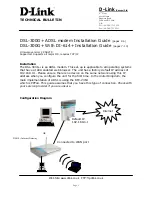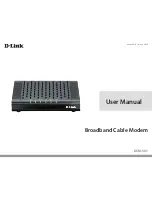
PSM-500/500L/500LT SCPC Satellite Modem
Operation
PSM-500/500L/500LT - Rev. 0.91
Page 3-1
Chapter 3 - Operation
3.1 Operating Procedures
Operation of the PSM-500 Modem consists of controlling the unit’s operating parameters and
monitoring status and responses via one of the control interfaces. There are three possible
control methods for the modem:
1. Front Panel Keypad Control. (Section 3.1.1)
2. Terminal Mode Control via rear panel 232/485 or USB control ports. (Section 3.3)
3. Command Interface Binary Control via rear panel 232/485 or USB control ports.
(Section 3.4)
Any of these methods may be used separately or together to monitor and control the modem unit.
Each of these three interfaces and their respective methods are discussed separately below in
the sections noted above.
Additional operating procedures are also presented later in this section on using some of the
unique features of the PSM-500 that would not normally be set-up during installation. These
include such items as the FIFO buffer, built-in BERT, storing and recalling configuration
information, AUPC, the analog monitor output, redundancy and automatic recovery.
3.1.1 Front Panel Control
The front panel of the PSM-500 allows complete control and monitor of all modem parameters
and functions via a keypad, LCD display and status LEDs.
3.1.2 Front Panel Layout and Features
The front panel layout shown in Figure 3–1, identifies the location and labeling of items on the
front panel. The front panel is divided into three functional areas: the LCD display, the Keypad
and the LED Indicators, each described below.
3.1.2.1 Front Panel LCD Display
The front panel display is a 2 line by 16 character LCD display. It is augmented by the four LED
highlighted legends to the display’s right. The display and legends are lighted and the brightness
can be set to increase when the front panel is currently in use, automatically dimming with
inactivity. The display has four distinct areas showing current information. The four legends
indicate the Modem’s functional area that is currently being monitored or controlled, including
“Unit”, “Mod”, “Demod” and “Interface”. The upper left of the LCD shows the current area of use,
such as “Status”, “IF”, “Data”, “Alarm” or “Test” (for the Mod and Demod). The upper right shows
the current parameter being monitored, such as “Frequency”, “Offset” or “Bit Rate”. The lower line
shows the current value of that parameter. The LCD display is a single entry window into the
large matrix of parameters which can be monitored and set from the front panel. It is convenient
to imagine the matrix as 3 dimensional spreadsheet just like a multi-sheet Excel workbook, with
the different “sheets” selected by the buttons for Unit, Mod, Demod and Interface, while
navigation on a given sheet is accomplished using the up, down, left and right arrow keys.
The backlight brightness can be set for two states: Active and Idle. The active state is entered
whenever a key on the front panel is pressed, while the idle state occurs after approximately 60
seconds of inactivity. Each state may be set to “Off”, 1/3 brightness, 2/3 brightness and full
brightness. The default setting is full in the active state and 1/3 in the idle state. To change the
settings for either state go to the “Modem LCD Active” or “Modem LCD Idle” brightness
parameter and adjust to the desired values.
Содержание PSM-500
Страница 1: ...M500 VSAT SCPC Satellite Modem PSM 500 PSM 500L 500LT Installation and Operation Manual Revision 0 91 ...
Страница 2: ......
Страница 32: ......
Страница 60: ......
















































